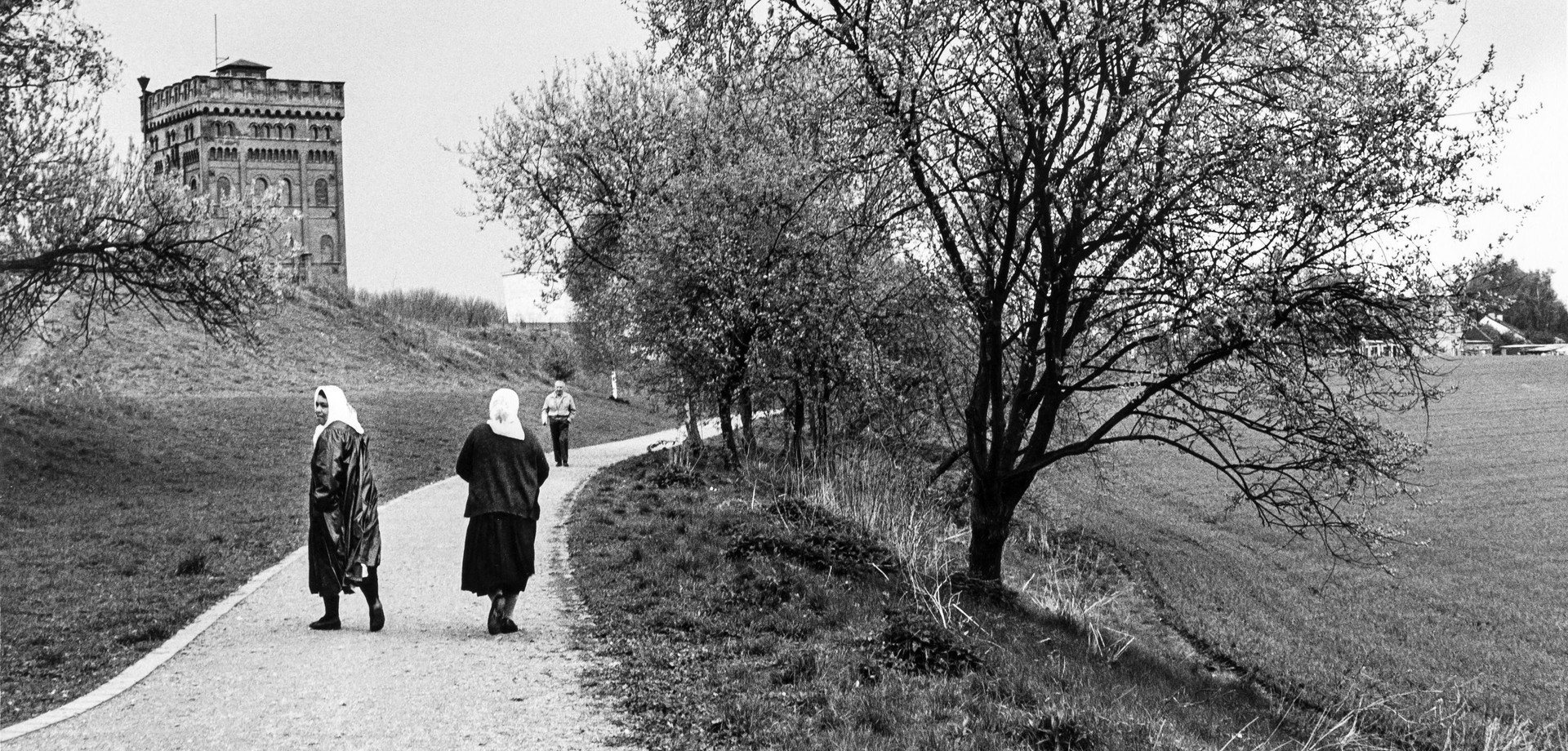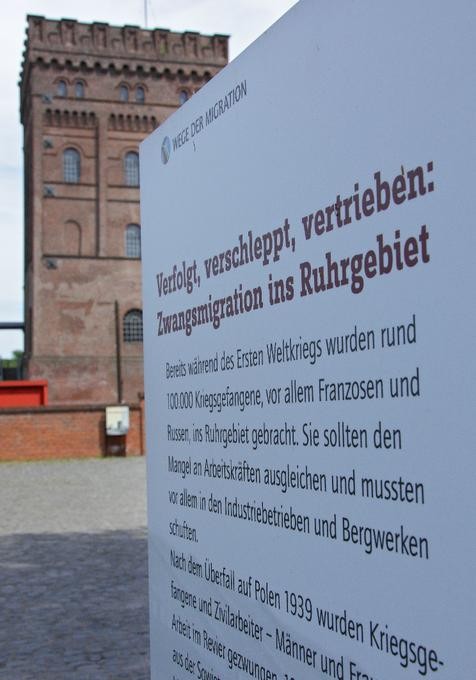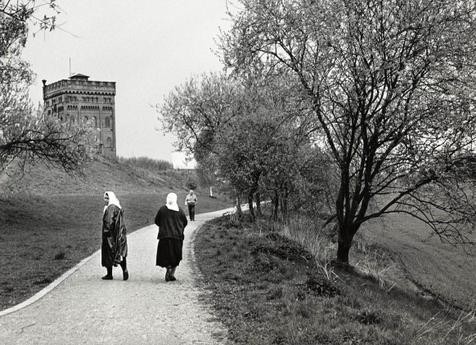
Ways of migrating
Twelve chapters following the trail of immigration in the region.
The information boards are written in German. A guided tour in English is offered separately.
The Ruhr region has been a destination for immigrants for more than 150 years. Millions of people came to the area during industrialisation – many hoping to earn good money for hard work, but some out of necessity or fleeing persecution. Today, people from 170 nations live in the Ruhr region. This history is brought to life in a permanent exhibition on the grounds of the Hannover colliery.
In twelve chapters, visitors follow the traces of immigration to the region, which are impressively described on picture and text panels with general trends as well as local and biographical examples.
The beginnings of immigration
In the mid-19th century, the Ruhr region transformed from a rural area into a vibrant industrial region. Within a few years, dozens of coal mines and ironworks were established. Soon, the enormous demand for labour could no longer be met by the surrounding area. People from all over Westphalia, the Rhineland and Hesse moved to the region to work. Numerous foreign investors equipped their companies with their own skilled workers and personnel. Thousands of people from Ireland, Belgium and France moved to the Ruhr region; Italian migrant workers came as specialists in stoneworking and tunnel construction.
With the industrial boom at the end of the 19th century, more than half a million people from Silesia, Posen and Masuria moved to the region. They soon formed the majority, especially in the coal mines and settlements of the northern Ruhr area. They were usually Prussian citizens, but most spoke Polish or dialect and were regarded as Poles in everyday life. Many suffered from prejudice. After the First World War, the majority of Polish immigrants left the region: a good third returned to the newly founded state of Poland, and a third moved further west to the French and Belgian mining regions, which attracted them with high wages and good living conditions.
Persecuted, deported, expelled
During the Second World War, hundreds of thousands of people, mainly from Poland and the Soviet Union, were brought to the Ruhr region and forced to work. As civilian workers, prisoners of war or forced labourers, they had to work to the point of exhaustion in agriculture, ironworks, steelworks and coal mines under inhumane conditions. Most were housed in specially established guarded camps, and contact with the German population was forbidden. After the end of the war, many returned to their home countries. However, more than 100,000 people, mainly from Poland, were unable to return because they faced persecution. They remained in temporary camps as ‘displaced persons’ (DPs). Many were able to emigrate overseas in the following years. In 1951, the state of North Rhine-Westphalia set up permanent settlements for the 17,000 people who remained.
At the end of the 1940s, there was an urgent need for workers in the Ruhr region to rebuild industry and cities. From 1949 onwards, more than 600,000 refugees and displaced persons came to the region to work in mining, the iron and steel industry or the textile industry.
Guest workers for the mining area
Reconstruction and economic growth brought rapid growth to the Ruhr region in the 1950s. Refugees and displaced persons contributed significantly to the reconstruction. Faced with a looming labour shortage, the Federal Government concluded agreements with Italy, Spain, Greece, Turkey, Morocco, Portugal, Tunisia and Yugoslavia in 1955 to recruit workers. The prospect of quick money initially attracted mainly young men from the unemployment-plagued regions of southern Europe. Many wanted to return home quickly to build a life for themselves there. However, the prosperity they had acquired often led them to stay longer and bring their families over. Increasingly, women also came to work in industry and commerce. The economic crisis of 1973 brought an end to targeted recruitment.
Refugees and repatriates
In the 1980s and 1990s, numerous refugees and ethnic German repatriates came to the Ruhr region. After the military coup in Turkey in 1980, it was mainly well-educated Kurds who sought political asylum. The banning of the Solidarnosc trade union and the imposition of martial law in Poland drove around 100,000 Polish activists and civil rights campaigners to Germany. At the same time, a good million people from Poland took advantage of their status as German ethnic German repatriates to immigrate to Germany. Most of them moved to Berlin or the Ruhr region. After the collapse of the Soviet Union, the number of immigrants reached a new peak in 1992.
Living together in the Ruhr Area
Today, people from 170 nations live in the Ruhr region. More than 100 different religions are practised. After the loss of industrial mass employment during structural change, the proportion of small business owners among people with a migration background has increased significantly. As a result, the major cities in the region now often have residential and commercial districts populated by immigrants. The long history of immigration to the Ruhr region and the tradition of solidarity among the people in the region often help today to find solutions to small and large conflicts in coexistence and to develop common perspectives for the future.


